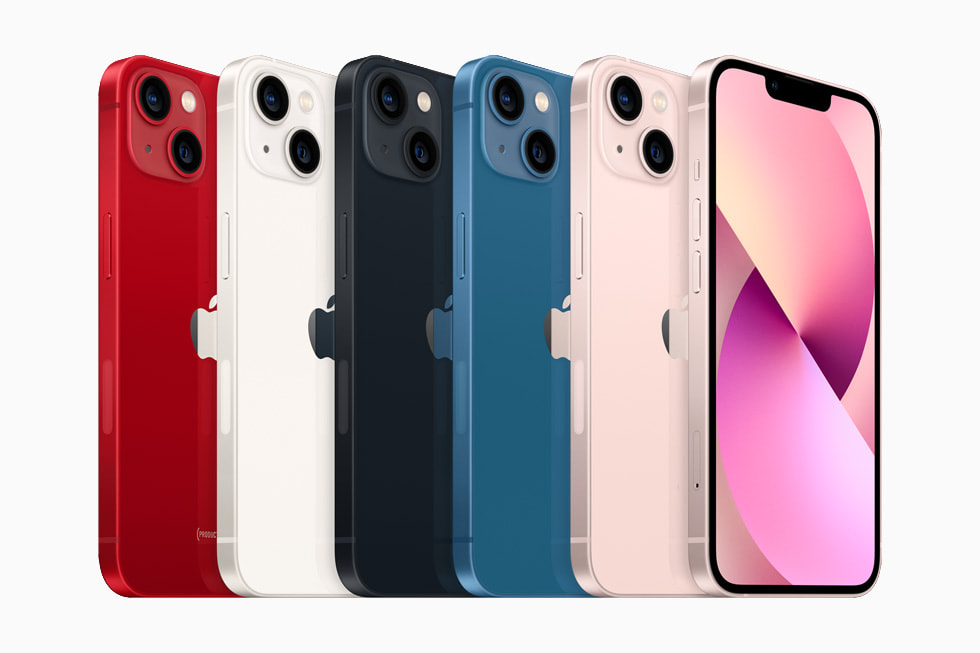
The iPhone 13 doesn’t bring with it a huge number of new features, but it does improve on the iPhone 12 in several areas—chiefly battery life, power, display and cameras—to make this one of the most impressive all-round handsets we’ve seen from Apple. On paper, you’d be hard pressed to find a reason why Apple didn’t call this phone the iPhone 12S. The design is largely the same, the specs don’t look hugely different, and there aren’t many remarkable new features. However, everything on the iPhone 13 is a touch better than before—and some elements are significantly better.
The highlight of the iPhone 13 is its battery life. Previously, iPhones haven’t been synonymous with strong battery life, but during every day of our testing we’ve been hard pressed to run the iPhone 13 out of juice. Apple has finally cracked it(突破瓶颈) when it comes to battery life, and it’s now far better than it has been on previous iPhone iterations.
The iPhone 13’s new A15 Bionic chipset, meanwhile, is incredibly powerful, and paired with 4GB of RAM it’s capable of running multiple apps and tasks quickly and efficiently.
A new duo camera for the iPhone 13 improves clarity in images, while the introduction of the company’s Sensor Shift optical image stabilization (OIS) technology, previously only available on Apple’s Pro Max handsets, is a big deal for those who want to shoot quickly without losing their subject in a blur.
Even the screen on the iPhone 13 is a touch better than what we’ve seen on previous “standard” iPhones, and that’s a big deal if you’re upgrading from an iPhone XS or older. The OLED technology here enables a brighter picture than ever, and the picture quality is simply fantastic. One disappointment, however, is that Apple hasn’t included a 120Hz refresh rate on the iPhone 13, so you’re not getting as smooth an experience as on the iPhone 13 Pro or iPhone 13 Pro Max.
While at first glance the iPhone 13 may not seem like a great leap forward for Apple, the improved battery life, performance, screen and camera all add up to be a worthwhile upgrade for anyone who’s coming from an older iPhone, or looking to make the switch from Android.
本时文内容由奇速英语国际教育研究院原创编写,未经书面授权,禁止复制和任何商业用途,版权所有,侵权必究!(作者投稿及时文阅读定制请联系微信:18980471698)
1.What can we learn about the iPhone 12 and the iPhone 13?
A We are incapable of seeing any new features on the iPhone 13.
B There are improvements in battery life and apps on the iPhone 13.
C It’s effortless to know why the iPhone 13 isn’t called the iPhone 12S.
D The iPhone 13 and the iPhone 12 look quite alike.
解析:选D。D 细节理解题。根据第一段:iPhone 13和iPhone 12的设计基本相同,规格看起来也没有太大不同,也没有太多引人注目的新功能,可知D正确。A项以偏概全,原文是“没有大量新功能”;B项中的apps属于无中生有,iPhone 13提升的方面没有软件应用(apps);C项扭曲事实,原文是“很难找到理由”。故选D。
2.What does the underlined part “out of juice” in Paragraph 2 most probably mean?
A Full of energy.
B Out of order.
C Out of power.
D Filled with electricity.
解析:选C。C 词义猜测题。根据划线部分定位到第二段第二句:以前,苹果并不是电池续航能力强的代名词,但在我们每天的测试中,我们很难让苹果13“out of juice”;由but表转折可推测前后意思相反,即后部分表达的是苹果13电池续航能力提升,推测很难让苹果13“没电”。故选C。
3.What makes the iPhone 13’s camera impressive?
A The A15 Bionic chipset.
B The new duo camera.
C The clarity in images.
D The OIS technology.
解析:选D。D 细节理解题。根据camera定位到第四段,根据a big deal可知光学防抖是让苹果13摄像出彩的重要方面,故选D。A项答非所问,题目是关于摄像不是关于芯片的;根据常识可知,苹果之前已经出过双摄,故双摄不足以让苹果13的相机出彩,B项不对;C项答非所问,拍照清晰只是双摄改进后的结果。故选D。
4.Which of the following iPhone can provide us with the greatest screen experience?
A The iPhone 13.
B The iPhone 13 Pro.
C The iPhone XS
D The iPhone 12.
解析:选B。B 细节理解题。根据screen定位到第五段,可知iPhone 13的屏幕比之前系列的iPhone更好,但iPhone 13没有iPhone 13 Pro和iPhone 13 Pro Max好,故选B。
5.What’s the author’s attitude towards purchasing an iPhone 13?
A Cautious.
B Negative.
C Ambiguous.
D Supportive.
解析:选D。D 观点态度题。根据最后一段to be a worthwhile upgrade可知,作者对购买iPhone 13是支持的。故选D。